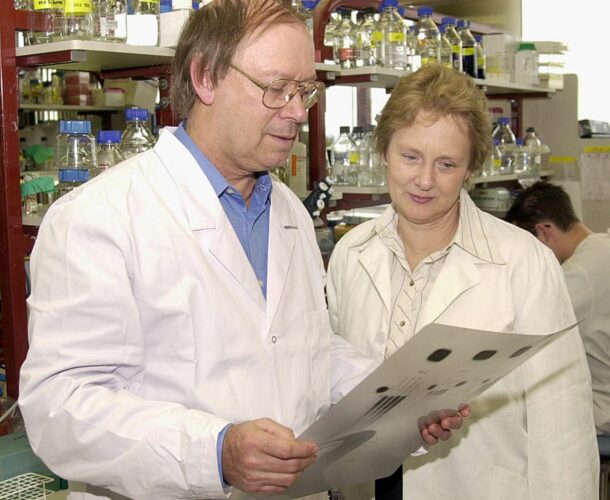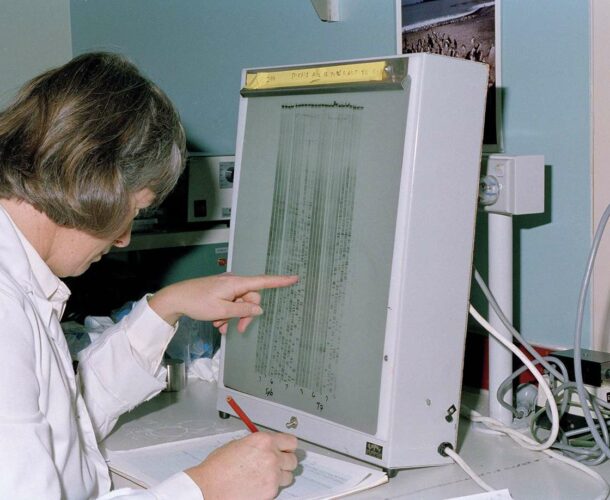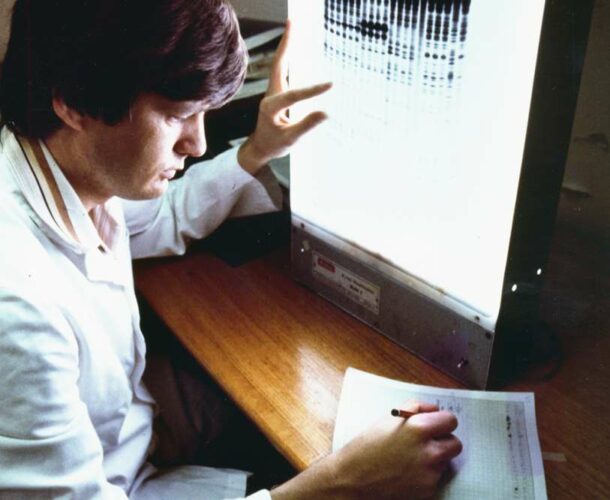Moving into the molecular era
In late 1971, Dr Jerry Adams and Dr Suzanne Cory joined the institute to launch a new laboratory focused on exploring biological functions by studying DNA. They had trained with the Nobel Prize-winning co-discoverers of DNA structure – Adams with James Watson and Cory with Francis Crick.
Adams and Cory had persuaded director Professor Gus Nossal that the time was ripe to invest in the new science of molecular biology to address one of the biggest mysteries of immunology – how the body’s capacity to make billions of different antibodies is encoded in our DNA. Cory says, “We were quite convinced molecular biology was going to illuminate immunology“.
They initiated a long-term collaboration with Alan Harris, who had developed cell lines from antibody-secreting tumours, and succeeded in isolating antibody messenger RNA from them. But progress was slow until the mid 1970s, when a revolutionary new technology called recombinant DNA or gene cloning emerged.
Gene cloning comes to Australia
Cory and Adams immediately recognise the power of gene cloning. With it, scientists can isolate a single gene amongst the myriad others and insert it into a microorganism to mass produce the purified gene for further investigations. The technique is something many undergraduates would now perform routinely, but in the mid-1970s it marked a seismic change in biology.
“The recombinant DNA technology came to be termed genetic engineering, and its awesome power provokes both hope and fear,” Nossal later mused. Indeed, even many in the scientific community called for a freeze on recombinant DNA research until strict guidelines were developed. But Nossal foresees its enormous potential benefits. “The technology could be used to synthesise precious human proteins such as insulin and other hormones, blood clotting factors or even monoclonal antibodies, and isolate antigens from pathogens for manufacture of vaccines.1
With Nossal’s enthusiastic backing, Adams and Cory help to introduce genetic engineering to Australia. The Australian guidelines for recombinant DNA research in higher organisms are developed around their project and require the institute to build an “elaborate and expensive” specially designed facility with airlocks, special filters for all exhaust air and provision for steam sterilization of all waste.”2
Solving the antibody puzzle
In the late 70s and early 80s, Adams and Cory and their team, which now includes Dr Dave Kemp, Dr Elizabeth Webb and Dr Ora Bernard, and their first students, Nick Gough and Brett Tyler, are amongst the early vanguard of scientists cloning antibody gene elements and determining how individual B cells make only a single antibody. Particularly important was their discovery that the remarkable DNA shuffling that creates each antibody gene involves large deletions of DNA.
Cancer and malaria research also benefit
As recombinant DNA technology spreads throughout the institute, benefits are reaped in cancer and malaria.
In a new venture, the Molecular Biology team uses the technology to identify key cancer-causing genes.
A team of researchers from the Walter and Eliza Hall Institute and the adjacent Ludwig Institute of Cancer Research use it to clone CSF genes, enabling production of these extremely rare hormones in sufficient quantities for clinical tests. The CSFs have since helped 20 million cancer patients worldwide to recover from chemotherapy.
Genetic engineering also enabled the first cloning of malaria parasite antigens – molecules recognised and attacked by the host system – a crucial scientific leap in the development of recombinant malaria vaccines, now moving toward clinical trials.









